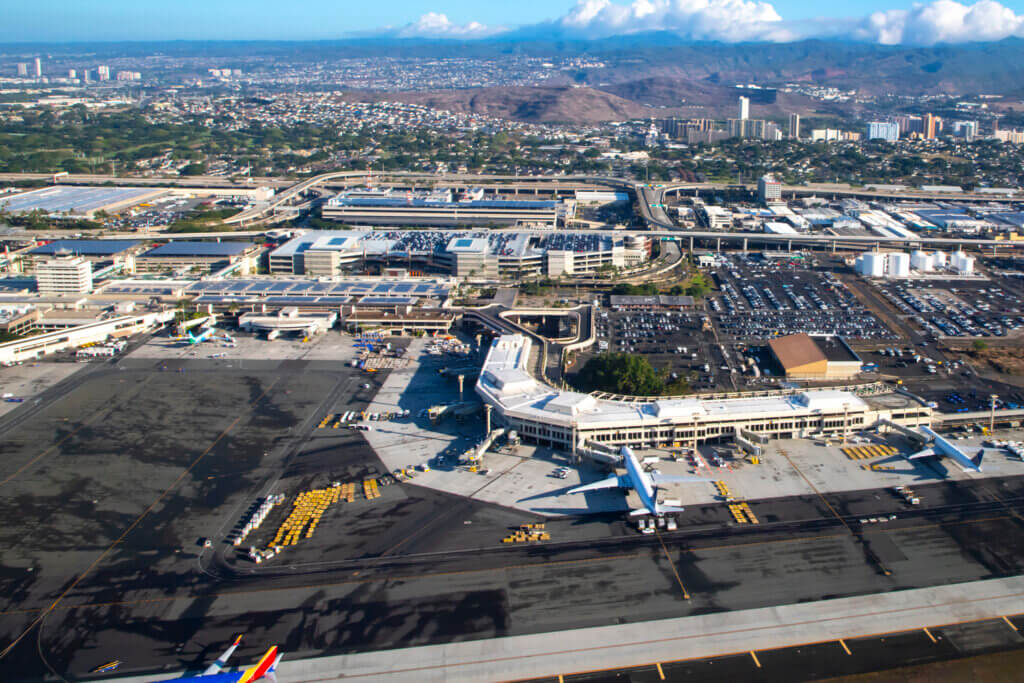In a bid to improve travelers’ experience and efficiency at the airport, HNL welcomes autonomous electric shuttles as part of a test to see if the new vehicles are suitable for standard airport operations.
The Daniel K. Inouye International Airport is Hawaii’s largest and most advanced airport, though it’s still a far cry from other airports around the world and even in the U.S. One of the most lacking aspects of the airport, aside from inadequate passenger holding facilities – which, frankly, can’t really change – is intra-airport transportation. Yes, there are some moving walkways and there are shuttle buses – the Wiki Wiki Shuttle – but none of them are all that adequate.
Yes, the Wiki Wiki Shuttle functions as a transportation system, but they’re not great. The last time I rode one from C Gates back to Terminal 1, the shuttles were hot, cramped, and reeked of diesel exhaust. But that has the potential to change as HNL welcomes autonomous electric shuttles on a trial basis.
HNL Welcomes Autonomous Electric Shuttles
The Hawaii Department of Transportation is launching a pilot program to improve Honolulu’s intra-airport transportation. As part of its program, HNL welcomes autonomic electric shuttles to augment their existing Wiki Wiki Shuttle buses. But these aren’t electric buses like those TheBus utilizes on routes across Oahu. Instead, the DOT has acquired a fleet of little 12-passenger shuttles that look like standard airport people-mover cars.

Dubbed Miki, Hawaiian for agile, these shuttles come from Florida-based Beep, Inc. Each one is ADA-friendly and will carry a maximum of 11 passengers along with a shuttle attendant, who will “serve as ambassador for the new shuttle pilot project and to educate riders on how Miki operates and the service offered at HNL.” They’re also trained on the safety features of the Miki shuttles and can take manual control of them if needed.
Now, it’s important to note that as HNL welcomes autonomous electric shuttles, the Miki Shuttle aren’t replacing the Wiki Wiki Shuttles. Rather, they will augment the existing fleet of buses, and will operate on the route between C Gates and G Gates and Terminals 1 and 2, on the same schedule as the Wiki Wiki Shuttles – 6 am to 10 pm, daily.
So, how many Miki Shuttles will operate during the trial period? Apparently, there will be a total of four electric shuttles, but only two of them will be in use at a given time. As a result, I wouldn’t expect to see them often – you’ll continue to primarily see Wiki Wiki Shuttles driving around the airport.
Interestingly, the Hawaii Department of Transportation isn’t acquiring the shuttles themselves. Rather, they’re partnering with a company called Sustainability Partners, which offers municipal and state government-focused services, including Infrastructure as a Service® arrangements, which is the program being used here. Under the current agreement, the State of Hawaii will pay Sustainability Partners on a per-mile cost basis.
Final Thoughts
As HNL welcomes autonomous electric shuttles, it’ll be interesting to see how they perform, and how travelers react to them. Service with the Miki Shuttles began on Wednesday, April 17, 2024, and will run for eighteen months, placing the service endure in October 2025. If all goes well, I’d like to think that these electric autonomous vehicles will become a permanent fixture around our Honolulu Airport, but we’ll have to wait and see.
Personally, I don’t really use the Wiki Wiki Shuttles today, and probably won’t. They’re really best for those connecting from an airline in Terminal 2 to Hawaiian Airlines or from United Airlines to ANA, as United occupies in G Gates and ANA from C Gates. Otherwise, HNL is a very walkable airport. Hot? Yes. But definitely walkable.

